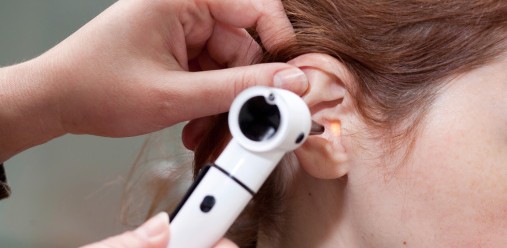Novel Antibiotic Design to Prevent Hearing Loss
One of ongoing challenges that modern medicine faces is the treatment of bacterial infections. One of the most widely used class of antibiotics to treat serious infections of the upper respiratory tract, urinary tract, and septicemia are the aminoglycosides. They are also been used in cases where other antibiotics have failed. Aminoglycosides are used primarily in infections involving aerobic, gram negative bacteria. While this class of antibiotics offers potent antimicrobial properties, the major side effect is loss of hearing. It is estimated that 20 – 50% of those treated with aminoglycosides develop either partial or complete loss of hearing. In simplest form, aminoglycosides cause hearing loss by inducing sensory hair cell degeneration in the cochlea (Huth ME, Ricci AJ, Chen AG. International Journal of Otolaryngology 2011). This can also result in damage to the vestibular system resulting in ataxia and dizziness.
In a recent study published at the beginning of January, researchers from the Stanford University School of Medicine have developed a modified version of an aminoglycoside that has just as effective antimicrobial properties, but does not carry the major side effect of deafness. Dr. Alan Cheng and Dr. Anthony Ricci spent over 4 years of research to develop and produce a small amount of an antibiotic, now known as N1MS. This newly patented drug was derived from another aminoglycoside, sisomicin. N1MS was used to treat a urinary tract infection in mice. The drug successfully eliminated the infection but did not cause deafness, as other drugs in this class have. Comparatively, treatment with sisomicin caused 75 – 85% hair cell loss and profound hearing loss in treated mice. The mechanism of action of N1MS was designed so that it avoids entering into the inner ear cell’s ion channels where deafness is known to occur. The other benefit of this newly designed drug is that it is non-toxic to the kidneys, which is also a known major side effect of aminoglycosides.
The continual development of bacterial resistance to antibiotics and toxicities that are known among the most effective drugs, have created a platform for the development of novel therapeutic agents like N1MS. The aminoglycosides are subject of further research in the treatment of specific human genetic diseases.
Journal Reference:
Huth ME, Han KH, Sotoudeh K, Hsieh YJ, Effertz T, Vu AA, Verhoeven S, Hsieh M, Greenhouse R, Cheng AG, and Ricci AJ. Designer aminoglycosides prevent cochlear hair cell loss and hearing loss. Journal of Clinical Investigation. 2015 Jan 2

